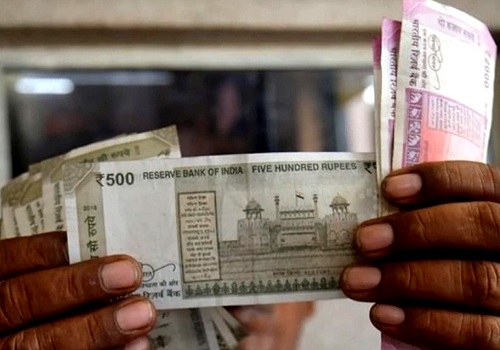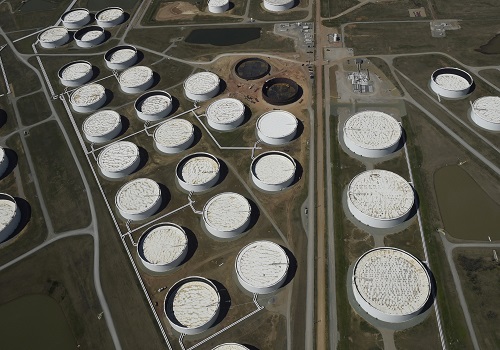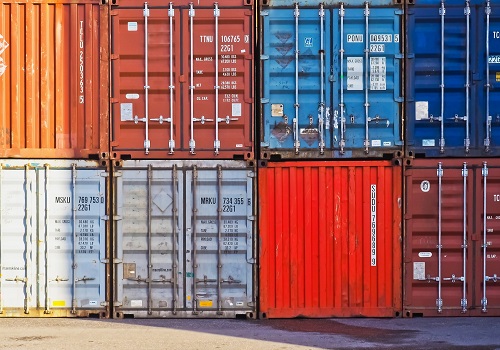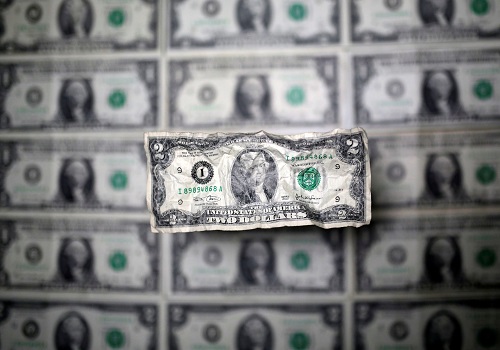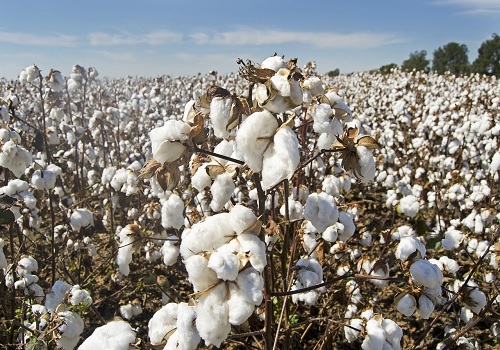Jeera trading range for the day is 24070-25030 - Kedia Advisory

Follow us Now on Telegram ! Get daily 10 - 12 important updates on Business, Finance and Investment. Join our Telegram Channel
Gold
Gold prices declined by 0.21%, settling at Rs.77,158 per 10 grams, as a recovering dollar pressured bullion. Comments from President-elect Donald Trump suggesting no scaling back of tariff policies further supported the dollar. Traders are focusing on U.S. economic data releases this week, including job openings, Fed minutes, and the non-farm payrolls report, to gauge the Federal Reserve's monetary policy direction. Fed officials, including Mary Daly and Adriana Kugler, signaled a cautious approach to rate cuts, aligning with Richmond Fed President Thomas Barkin's emphasis on maintaining restrictive rates to counter inflation risks. Despite a total 1% rate cut by the Fed in late 2024, policymakers project only a 0.5% reduction this year, which may weigh on gold prices. In global markets, gold demand remained mixed. Indian dealers continued to offer discounts of up to $14 per ounce due to elevated prices deterring buyers. Meanwhile, premiums in China rose to $4.50-$10 per ounce, driven by expectations of stronger demand ahead of the Chinese New Year. Central banks added 60 tons of gold in October, doubling the 12-month average, with India purchasing 27 tons during the month. Technically, gold is under long liquidation as open interest dropped by 6.44% to 11,807 contracts. Support is seen at Rs.76,640, with further downside to Rs.76,125 if breached. Resistance lies at Rs.77,595, and a move above could push prices to Rs.78,035.
Trading Ideas:
* Gold trading range for the day is 76125-78035.
* Gold dropped as dollar recovered after President-elect Trump said his tariff policy would not be scaled back.
* Fed’s benchmark policy rate should stay restrictive until it is more certain that inflation is returning to its 2% target – Barkin
* Remarks from Fed official’s reinforced the view that the U.S. central bank will adopt a more cautious approach to interest rate cuts this year.
Silver
Silver prices rose 1.49%, settling at Rs.90,554 per kg, as investors anticipated key US economic data, including the upcoming monthly jobs report, which could influence the Federal Reserve's monetary policy outlook. The metal also drew support from an optimistic economic outlook in China, the largest consumer of silver. Beijing's commitment to "more proactive" policies and lower interest rates to stimulate growth boosted sentiment, while China's services sector recorded its fastest expansion in seven months, signaling resilient consumption. In the US, new orders for manufactured goods fell by 0.4% in November, exceeding expectations of a 0.3% drop, indicating a mixed economic picture. Meanwhile, the S&P Global US Services PMI stood at 56.8 in December, pointing to the strongest sector growth since March 2022. The Composite PMI also rose to 55.4, supported by improved client demand and a rise in new business, both domestically and internationally. On the supply-demand front, the Silver Institute forecasts a 4% reduction in the global silver deficit to 182 million ounces in 2024. Record industrial demand, bolstered by electronics, EVs, and solar panels, is expected to lift total demand to 1.21 billion ounces despite a decline in physical investment. Technically, silver saw short covering as open interest declined by 12.36% to 27,998 contracts. Support lies at Rs.89,030, with further downside potential to Rs.87,510. Resistance is expected at Rs.91,775, and a break above could see prices testing Rs.93,000.
Trading Ideas:
* Silver trading range for the day is 87510-93000.
* Silver gains as investors cautiously awaited key US economic data that could impact Fed’s monetary policy outlook.
* New orders for manufactured goods in the US fell 0.4% from the previous month to $586.1 billion in November 2024
* The S&P Global US Composite PMI rose to 55.4 in December 2024 from 54.9 in November.
Crude Oil
Crude oil prices dropped by 1.02% to settle at Rs.6,308 per barrel as bearish economic indicators from the United States and Germany outweighed support from a weaker U.S. dollar and forecasts for increased heating demand due to an impending winter storm. Saudi Aramco’s decision to raise crude prices for February in Asia, signaling stronger demand expectations, provided some bullish sentiment. However, concerns about global supply persist as stronger Western sanctions on Iranian and Russian oil loom. Goldman Sachs anticipates a 300,000 bpd decline in Iranian output by Q2 2025 due to tighter U.S. sanctions. Asia’s crude imports dropped by 1.4% to 26.51 million bpd in 2024, marking the first annual decline in three years, led by weak demand from China. Meanwhile, U.S. crude inventories fell by 1.178 million barrels last week, lower than the expected 2.75 million-barrel draw. Gasoline and distillate inventories rose significantly by 7.717 million and 6.406 million barrels, respectively, highlighting weaker-than-expected demand for refined products. U.S. crude production reached a record 13.46 million bpd in October, driven by surging demand, with overall oil product consumption hitting its highest level since August 2019. Distillate fuel demand also rose to a one-year high of 4.06 million bpd. Technically, crude oil is under long liquidation, with open interest declining by 14.91% to 12,244 contracts. Immediate support lies at Rs.6,257, with a further downside to Rs.6,205 if breached. Resistance is anticipated at Rs.6,397, with a break above potentially testing Rs.6,485.
Trading Ideas:
* Crudeoil trading range for the day is 6205-6485.
* Crude oil dropped as some bearish economic news from the United States and Germany offset bullish support
* Support also seen amid expectations of tighter sanctions on Iranian and Russian oil exports.
* Goldman Sachs expects Iranian oil production and exports to fall by the second quarter.
Natural Gas
Natural gas prices climbed by 7.18% to settle at Rs.310.6 as harsh winter storms disrupted production and boosted heating demand. Freeze-offs caused gas output in the Lower 48 U.S. states to drop to a six-week low of 102.6 billion cubic feet per day (bcfd), down from a 10-month high of 106.0 bcfd on December 30. Historically, similar conditions in past winters have reduced output by as much as 16.5-20.4 bcfd during extreme cold spells. Meanwhile, colder-than-normal weather is forecast to persist through January 21, with daily gas usage potentially peaking at 155.5 bcfd on January 7. U.S. utilities reported a withdrawal of 116 billion cubic feet from storage, narrowing the surplus over the five-year average to 4.7% and pushing stockpiles 1.9% below last year’s levels. The Midwest and East regions experienced the sharpest inventory declines, driven by frigid temperatures. Additionally, near-record flows to U.S. LNG export plants and projections of record domestic gas demand in 2024 at 90.5 bcfd add further support. Globally, Russia’s Gazprom expects its gas production to recover by 61 billion cubic meters this year, with exports to China set to rise. Technically, natural gas is under short covering as open interest fell by 34.46% to 10,628 contracts. Immediate support is seen at Rs.297.2, with a break below potentially testing Rs.283.7. Resistance is now at Rs.322, with prices likely to test Rs.333.3 if breached.
Trading Ideas:
* Naturalgas trading range for the day is 283.7-333.3.
* Natural gas soared as winter storms battered the eastern half of the country, causing output to decline.
* Prices were gaining support from near-record gas flows to U.S. liquefied natural gas (LNG) export plants.
* Support also seen amid forecasts for colder weather and higher heating demand over the next two weeks than previously expected.
Copper
Copper prices climbed 1.52% to settle at Rs.812.55, driven by optimism surrounding China’s announcement to bolster its economy through increased ultra-long treasury bond funding in 2025. This initiative aims to enhance business investment and consumer spending, boosting sentiment for the world’s largest metal consumer. Market fundamentals reflected mixed trends. Shanghai Futures Exchange copper inventories rose by 12.1% last week, while Chile’s copper production increased by 9.8% year-on-year in November. In China, copper cathode production saw a monthly increase of 0.94% in November, with cumulative production from January to November up by 5.02% year-on-year. On the demand side, China’s copper imports in November surged to a one-year high at 528,000 tons, driven by restocking amid falling domestic inventories and favorable price conditions. The global refined copper market showed a 41,000 metric tons deficit in October, a narrower gap than the 136,000 metric tons deficit in September. For the first 10 months of the year, however, the market remained in a 287,000 metric tons surplus, indicating a balanced supply-demand outlook despite regional variations. Technically, copper witnessed short covering as open interest dropped by 23.15% to 7,012 contracts. Immediate support is pegged at Rs.801.2, with a break below potentially testing Rs.789.7. Resistance is now seen at Rs.821.5, and a move above could propel prices toward Rs.830.3.
Trading Ideas:
* Copper trading range for the day is 789.7-830.3.
* Copper gains after China pledged more support for its ailing economy.
* However, gains were capped by uncertainty surrounding the threat of U.S. tariffs on the world's biggest metal consumer.
* Copper inventories in SHFE warehouses rose 12.1% from last Friday
Zinc
Zinc prices rose 0.18% to settle at Rs.273.95, supported by optimism from China’s recent policy meeting. However, gains were limited by a strong U.S. dollar, as investors awaited key U.S. economic data. In Shanghai Futures Exchange warehouses, zinc inventories dropped 20.9% last week, reflecting tightening supply. Meanwhile, China's refined zinc production in December is expected to rise by over 20,000 metric tons month-on-month, marking a 5% increase, despite a year-on-year decrease of over 6%. Enhanced production in regions like Qinghai, Inner Mongolia, and Xinjiang drove this growth, offsetting reductions in Henan, Gansu, and Sichuan. On the global stage, the zinc market deficit widened to 69,100 metric tons in October from 47,000 tons in September, according to the International Lead and Zinc Study Group (ILZSG). However, the first ten months of 2024 still saw a surplus of 19,000 tons, significantly lower than the 356,000 tons surplus in the same period last year. Refined zinc production globally fell by 1.7%, while mine output declined by 3.8% due to reduced activity in Canada, China, South Africa, and Peru. Technically, zinc witnessed short covering as open interest dropped by 2.51% to 3,335 contracts, indicating reduced bearish bets. Immediate support for zinc is at Rs.272.2, with further downside potential to Rs.270.5. On the upside, resistance is seen at Rs.275.8, and a break above this level could push prices toward Rs.277.7.
Trading Ideas:
* Zinc trading range for the day is 270.5-277.7.
* Zinc gains influenced by the optimism stemming from China's policy meeting
* But the gains was tempered by a robust U.S. dollar awaiting directional cues from U.S. economic data
* Zinc inventories in warehouses monitored by the Shanghai Futures Exchange down 20.9% from last Friday
Aluminium
Aluminium prices edged up by 0.06% to settle at Rs.238.4 as supply worries persisted in the LME market. This concern narrowed the discount for the cash contract over three-month aluminium to $19 a ton, significantly reduced from over $40 in December. Stocks in LME-registered warehouses declined by more than 40% since May 2023, standing at 634,650 tons. Additionally, cancelled warrants accounted for 54% of total stocks, indicating that more metal is set to exit LME warehouses soon. Global primary aluminium output rose by 3% year-on-year to 6.04 million tonnes in November, according to the International Aluminium Institute (IAI). However, the global refined aluminium market remains in deficit, with a 40,300-ton shortfall recorded in October. For the first ten months of 2024, production totaled 59.65 million tons, while consumption reached 59.99 million tons, resulting in a supply shortage of 332,600 tons. China, the world's largest aluminium producer, saw output in November rise by 3.6% year-on-year to 3.71 million metric tons. Daily output averaged 123,667 tons, up 3% from October. From January to November, China’s aluminium production reached 40.22 million metric tons, reflecting a 4.6% increase year-on-year. Exports of unwrought aluminium and related products from China totaled nearly 5.5 million tons in the first ten months of 2024, a 17% growth year-on-year. Technically, aluminium is under fresh buying with open interest up by 0.16% to 3,717 contracts. Support lies at Rs.237.3, with further downside to Rs.236. Resistance is seen at Rs.239.6, with a break above potentially pushing prices to Rs.240.6.
Trading Ideas:
* Aluminium trading range for the day is 236-240.6.
* Aluminium gains on worries about supplies on the LME market.
* The discount for the cash contract over three-month aluminium narrowed to around $19 a ton from more than $40 in December.
* Global primary aluminium output in November rose 3% year on year to 6.04 million tonnes
Cottoncandy
Cottoncandy prices rose by 0.94% to Rs.54,830, supported by increasing cotton yarn demand from garment industries in South India and robust export orders. Despite higher global cotton production for CY 2024-25, projected at 117.4 million bales, India’s cotton arrivals in Punjab, Haryana, and Rajasthan dropped 43% until November 30, 2024, compared to last year. This has led to raw material shortages for ginners and spinners, particularly in Punjab, as farmers hold back kapas in anticipation of higher prices. India's cotton consumption for 2024-25 is estimated at 313 lakh bales, while pressing is forecasted at 302.25 lakh bales, as per CAI. Cotton imports for 2024-25 are projected to rise to 25 lakh bales, up from 15.2 lakh bales last year, reflecting a growing dependency on imports. U.S. cotton production for 2024-25 was revised upwards to 14.3 million bales, while global ending stocks are projected to increase by 267,000 bales due to higher supplies in Argentina, the United States, and Pakistan. On the other hand, world consumption is expected to rise by 570,000 bales, driven by increases in India, Pakistan, and Vietnam, despite reduced consumption in China. Technically, the market remains bullish as open interest surged by 3.36% to settle at 400 contracts. Cottoncandy is receiving support at Rs.54,340, with the next downside level at Rs.53,860. Resistance is now seen at Rs.55,110, with a potential upside to Rs.55,400 if breached.
Trading Ideas:
* Cottoncandy trading range for the day is 53860-55400.
* Cotton gains as cotton yarn prices increased due to rising demand from garment industries and strong export orders.
* India's cotton production in 2024/25 is likely to fall by 7.4% from a year ago
* Cotton production is projected to increase in China, Brazil, and Argentina, more than offsetting reductions in the US and Spain – USDA
* In Rajkot, a major spot market, the price ended at 25828 Rupees dropped by -0.35 percent.
Turmeric
Turmeric prices gained 0.74% to settle at Rs.15,536, driven by strong buying activity amid reports of limited supplies. The market remains firm as fresh crop arrivals are delayed due to prolonged vegetation growth caused by extended rains. Current turmeric arrivals increased slightly to 9,030 bags from 7,965 bags in the previous session. However, the crop is reported to be in good to excellent condition, suggesting a stable production outlook. Turmeric acreage has seen a significant rise this year. In Erode, sowing doubled compared to last year, while states like Maharashtra, Telangana, and Andhra Pradesh reported a 30-35% increase in sowing. Last year’s sowing of approximately 3-3.25 lakh hectares is expected to rise to 3.75-4 lakh hectares. Despite this, delayed harvesting may lead to tight supplies in the short term. Exports of turmeric during April–October 2024 jumped by 6.57% to 108,880 tonnes compared to the same period in 2023. October 2024 exports rose by 57.22% year-on-year to 15,938 tonnes. Imports also saw a significant rise of 118.99% during the April–October period, indicating robust demand. However, October 2024 imports declined by 23.53% compared to the previous year, reflecting shifting trade dynamics. Technically, the market is experiencing fresh buying as open interest increased by 2.31% to 12,400 contracts, with prices up Rs.114. Turmeric has support at Rs.15,298, with further downside potential to Rs.15,060. Resistance is at Rs.15,806, and a move above this level could push prices to Rs.16,076.
Trading Ideas:
* Turmeric trading range for the day is 15060-16076.
* Turmeric gains on strong buying activity amid reports of low supplies till the arrival of new crop.
* However downside seen limited as turmeric crop is reported to be in good to excellent condition, with minimal weather-related disruptions.
* In Indonesia, dry weather has accelerated harvesting, which is currently at peak levels.
* In Nizamabad, a major spot market, the price ended at 14375.4 Rupees dropped by 0 percent.
Jeera
Jeera prices rose by 0.14% to settle at Rs.24,450, supported by delayed sowing in Gujarat and Rajasthan, the primary producing states. High day temperatures have delayed sowing by 20-25 days and caused poor germination in some areas. Gujarat, which typically sows over 3.81 lakh hectares of jeera, has so far covered only 15%, with 57,915 hectares sown as of November 25, compared to 2.44 lakh hectares during the same period last year. Rajasthan's cultivation is also estimated to decrease by 10-15%, potentially reducing India’s cumin production by 10% in 2024-25. India remains the most competitive supplier of cumin globally, with prices at $3,050 per tonne, significantly lower than China's. This price advantage is attracting buyers from countries like China and boosting exports. Jeera exports surged 77.37% year-on-year during April-October 2024 to 135,450.64 tonnes, compared to 76,367.90 tonnes in the same period last year. October 2024 exports rose by 161.04% year-on-year to 16,257.44 tonnes. International demand, particularly from Europe and festive-related needs, has further strengthened export volumes. Technically, the market witnessed short covering as open interest dropped by 12.87% to 1,341 contracts while prices increased by Rs.35. Jeera finds support at Rs.24,270, with a further downside likely testing Rs.24,070. On the upside, resistance is at Rs.24,750, and a move above this level could push prices to Rs.25,030.
Trading Ideas:
* Jeera trading range for the day is 24070-25030.
* Jeera prices gained as sowing has been delayed.
* Higher day temperatures in the past few weeks has impacted the seeding of jeera and has also led to poor germination in various places.
* In Gujarat, jeera sowing has taken place in only 57,915 hectares till November 25 during the rabi 2024-25 cropping season.
* In Unjha, a major spot market, the price ended at 24333.15 Rupees dropped by -0.35 percent.
Views express by all participants are for information & academic purpose only. Kindly read disclaimer before referring below views
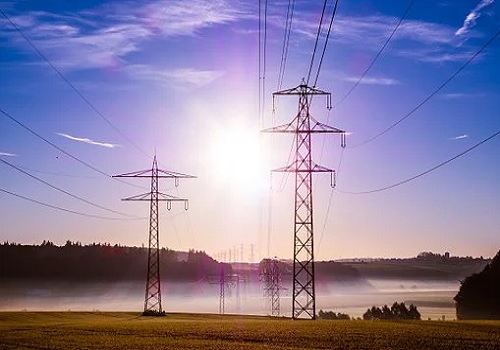
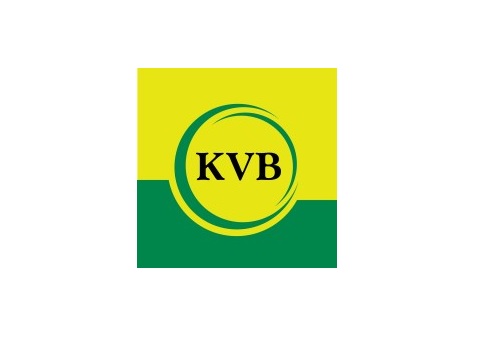


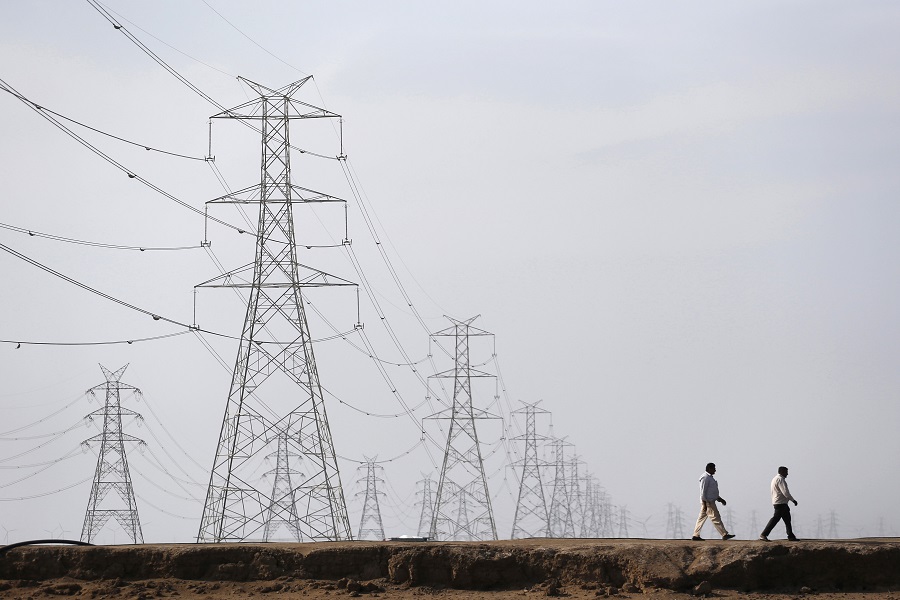





More News

Sell Copper Below 860 SL ABOVE 865 TGT 854/850 - Axis Securities Ltd







